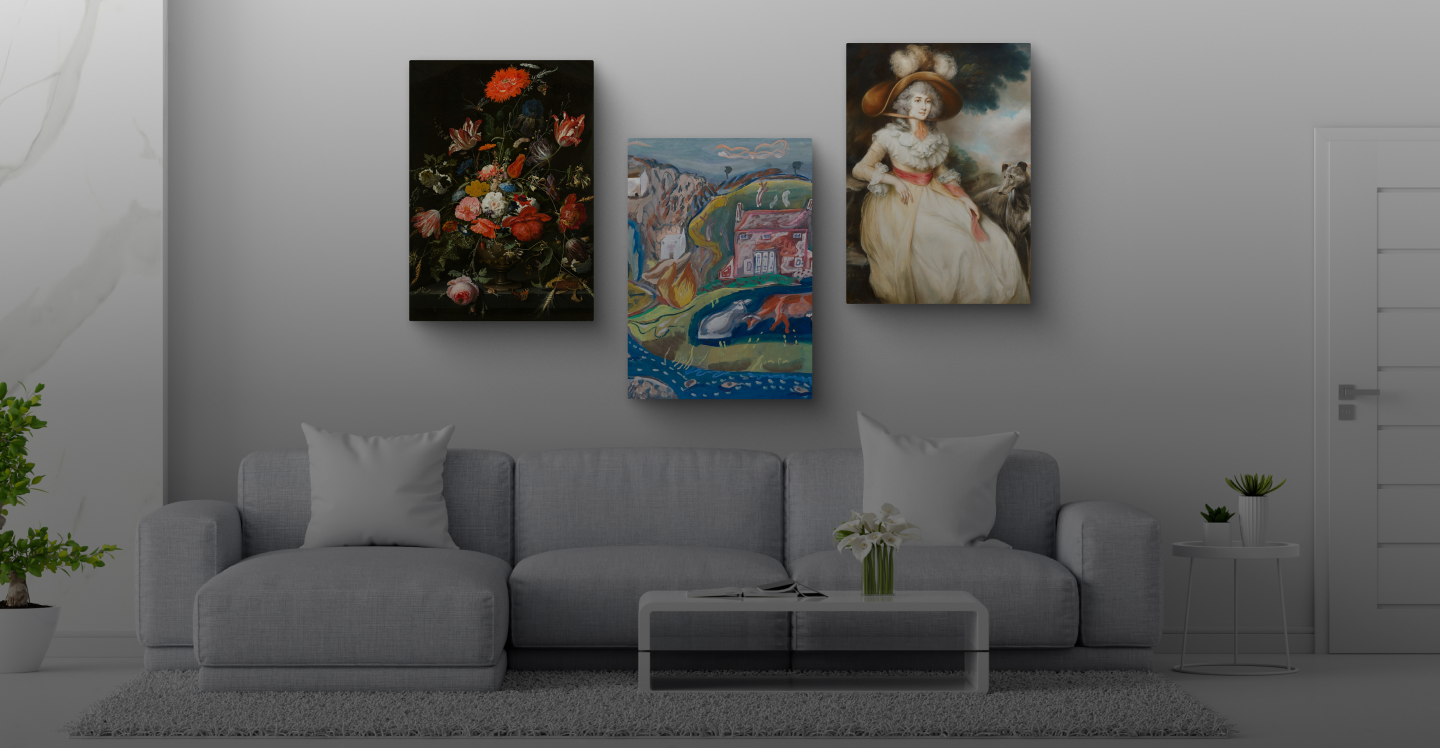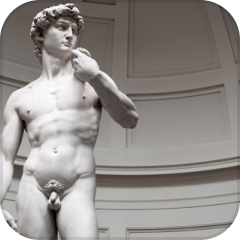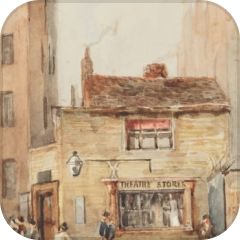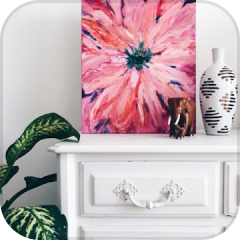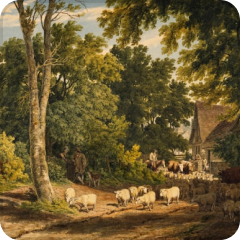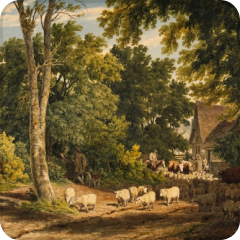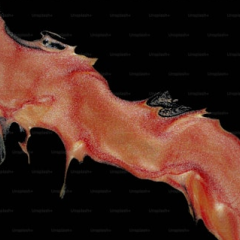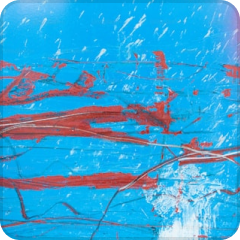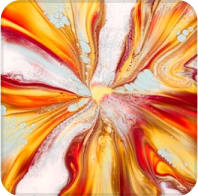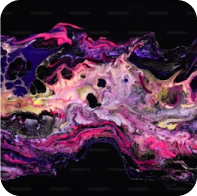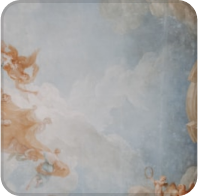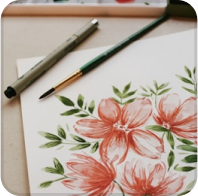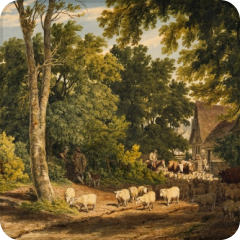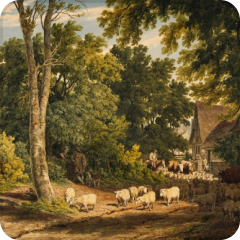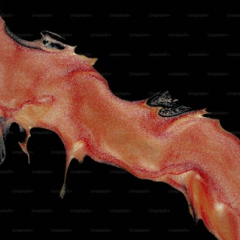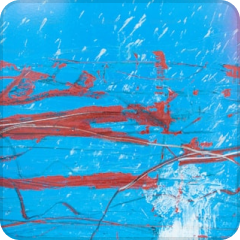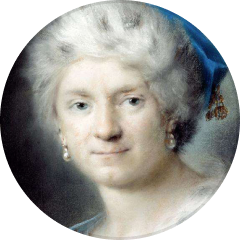





Top Categories
Transform Your Space with Personalized Art Prints
Bring your walls to life with premium, customizable canvas prints. Whether it’s your favorite memories or inspiring art, Zebaco makes it easy to create beautiful, durable pieces that reflect your style.

High-Quality Prints

Affordable Custom Art

100% Satisfaction
What’s On Sale
What Our Customers are Saying


Oliver Stone
"I recently purchased a stunning canvas from Zebaco, and I couldn't be happier with my choice! The vibrant colors and exquisite detail have truly transformed my living room. “


Amelia Rivers
"I recently purchased a stunning canvas from Zebaco, and I couldn't be happier with my choice! The vibrant colors and exquisite detail have truly transformed my living room. “


Ethan Hawke
"I recently purchased a stunning canvas from Zebaco, and I couldn't be happier with my choice! The vibrant colors and exquisite detail have truly transformed my living room. “


Sophia Bennett
"I recently purchased a stunning canvas from Zebaco, and I couldn't be happier with my choice! The vibrant colors and exquisite detail have truly transformed my living room. “


Sophia Bennett
"I recently purchased a stunning canvas from Zebaco, and I couldn't be happier with my choice! The vibrant colors and exquisite detail have truly transformed my living room. “
The Complete Guide to Photo Framing and Creating Stunning Large Framed Wall Pictures & Canvas Prints for Your Home
Transforming your living space into a personalized gallery has never been more achievable than it is today. The art of displaying large framed wall pictures & canvas prints represents one of the most impactful ways to infuse personality, warmth, and visual interest into any environment. Whether you're a seasoned decorator seeking fresh inspiration or a newcomer eager to learn the fundamentals of home aesthetics, mastering the craft of photo framing and wall art creation opens doors to endless creative possibilities.
The journey of creating memorable wall displays begins with understanding that every photograph possesses unique characteristics that can be enhanced or diminished depending on how it's presented. From intimate family portraits to breathtaking landscape photography, each image deserves careful consideration regarding its framing approach, placement strategy, and overall presentation methodology.
Understanding Fundamental Framing Principles
The foundation of exceptional framing lies in comprehending the relationship between image, frame, and environment. When working with large framed wall pictures & canvas prints, several core principles guide the decision-making process and ultimately determine the success of your display.
Proportion represents perhaps the most crucial element in framing decisions. The relationship between your artwork's dimensions and the frame's proportions directly influences how viewers perceive and interact with the piece. Oversized frames can overwhelm delicate imagery, while inadequate framing fails to provide sufficient visual weight for commanding photographs.
Color harmony plays an equally significant role in creating cohesive displays. The frame's hue should complement rather than compete with the artwork's palette. Neutral tones like black, white, and natural wood provide versatile foundations that work across diverse photographic styles, while bold colored frames can create dramatic focal points when used judiciously.
Texture considerations extend beyond mere aesthetics to encompass tactile experiences that viewers encounter when approaching your displays. Smooth metallic frames convey contemporary sophistication, while rustic wood textures evoke warmth and traditional charm. The interplay between frame texture and photographic content creates layers of visual interest that elevate simple displays into compelling artistic statements.
Material quality significantly impacts both longevity and visual appeal. Premium materials resist warping, fading, and deterioration over time, ensuring your investment maintains its beauty for decades. When selecting frames for large framed wall pictures & canvas prints, prioritize durability alongside aesthetic considerations to maximize long-term satisfaction.
Exploring Diverse Frame Materials and Their Characteristics
Contemporary framing markets offer an extensive array of materials, each bringing unique advantages and aesthetic qualities to your displays. Understanding these options empowers informed decision-making and helps achieve desired visual outcomes.
Wood frames remain perpetually popular due to their natural beauty and incredible versatility. Hardwood options like oak, maple, and walnut provide robust construction with distinctive grain patterns that add organic warmth to any space. Softwood alternatives such as pine offer budget-friendly solutions while maintaining attractive appearances suitable for casual displays.
Staining and finishing processes dramatically alter wood's final appearance. Light stains preserve natural grain visibility while adding subtle color enhancement. Dark stains create bold, dramatic frames that provide strong contrast against lighter artwork. Natural finishes celebrate wood's inherent beauty, making them ideal companions for nature photography and organic-themed displays.
Metal frames, particularly aluminum varieties, deliver sleek, contemporary aesthetics perfect for modern interiors. Their clean lines and precise construction complement architectural photography, abstract art, and minimalist compositions. Powder coating processes enable diverse color options while providing durable, chip-resistant surfaces that maintain their appearance through years of handling.
Composite materials combine multiple elements to achieve specific performance characteristics. Medium-density fiberboard cores wrapped in decorative veneers provide cost-effective solutions that mimic premium materials while offering excellent stability and resistance to environmental changes.
Plastic frames serve specialized purposes, particularly in children's rooms, bathrooms, and other high-moisture environments where traditional materials might suffer damage. Modern plastic formulations achieve remarkable realism, closely mimicking wood grain and metal finishes while providing lightweight, shatter-resistant alternatives.
Mastering Mount Selection and Preparation
Mounts, also known as mats, serve multiple functions beyond mere aesthetics. They create physical separation between artwork and glass, preventing potential damage from moisture accumulation or direct contact. Additionally, mounts provide visual breathing room that allows images to breathe within their frames, preventing claustrophobic appearances that can diminish artistic impact.
Selecting appropriate mount colors requires careful consideration of both artwork characteristics and room decor. White mounts offer timeless versatility that complements virtually any photographic style while providing neutral backgrounds that don't compete for attention. Cream and off-white alternatives add warmth while maintaining neutrality, making them excellent choices for vintage-inspired displays or traditional interiors.
Colored mounts can enhance specific elements within photographs when chosen thoughtfully. Subtle earth tones complement landscape photography beautifully, while bold colors can create dramatic focal points for black-and-white imagery or monochromatic compositions. However, exercise restraint when using colored mounts, as overly vibrant choices can overwhelm delicate photographic nuances.
Mount thickness influences the overall depth and visual weight of finished pieces. Standard mounting boards typically measure 2-4 millimeters thick, providing adequate separation for most applications. Premium mounting materials offer increased thickness options that create more pronounced shadow lines and enhanced dimensional effects.
Cutting mount apertures requires precision and patience to achieve professional results. The traditional beveled edge, cut at 45-degree angles, creates elegant transitions from mount surface to aperture opening. This beveling technique adds sophistication while casting subtle shadows that enhance the three-dimensional quality of displays.
Custom aperture sizes allow creative flexibility beyond standard rectangular openings. Circular, oval, and specialty-shaped apertures can highlight specific subjects or create unique presentation styles that distinguish your displays from conventional approaches.
Professional Framing Procedures and Best Practices
Proper framing procedures ensure both aesthetic excellence and long-term preservation of your cherished photographs. Following established methodologies protects your investment while achieving professional-quality results that rival commercial framing services.
Workspace preparation forms the foundation of successful framing projects. Clean, well-lit surfaces free from dust and debris prevent contamination that could mar finished pieces. Adequate lighting allows accurate color assessment and precise alignment of components during assembly.
Tool selection dramatically influences both process efficiency and final results. Quality cutting implements produce clean, precise edges that contribute to professional appearances. Measuring devices ensure accurate proportions and proper alignment throughout the assembly process. Specialized framing tools like point drivers and glazing clips facilitate secure, damage-free assembly.
Glass handling requires particular attention to safety and cleanliness. Standard picture glass provides adequate protection for most displays while maintaining crystal-clear visibility. Museum-quality glass offers superior optical clarity and ultraviolet protection for valuable or irreplaceable photographs. Acrylic alternatives provide shatter-resistant options ideal for children's rooms or high-traffic areas.
Cleaning glass surfaces demands gentle techniques that avoid scratching or streaking. Lint-free cloths and specialized glass cleaners remove fingerprints and dust without leaving residues that could affect visibility or attract future contamination.
Photo positioning within mounts requires precise measurement and careful alignment to achieve balanced presentations. Center-weighted compositions typically position images with equal margins on sides and top, while slightly larger bottom margins create subtle lifting effects that enhance visual appeal.
When working with large framed wall pictures & canvas prints, consider the viewing angle and typical observation distance. Images intended for close inspection might benefit from precise centering, while pieces designed for distance viewing might accommodate slight positioning variations without noticeable impact.
Innovative Display Strategies and Arrangement Concepts
Creating compelling wall displays transcends individual framing decisions to encompass broader compositional strategies that transform collections of images into cohesive artistic statements. Understanding arrangement principles enables the creation of gallery-worthy displays that enhance both individual pieces and overall spatial aesthetics.
Gallery wall compositions represent one of the most popular contemporary display approaches. These arrangements combine multiple pieces of varying sizes to create dynamic, visually engaging installations. Successful gallery walls balance several competing elements: visual weight distribution, color harmony, spacing consistency, and thematic coherence.
When planning gallery wall layouts, begin by arranging pieces on the floor to experiment with different configurations before committing to wall placement. This approach allows unlimited experimentation without creating unnecessary wall damage from repeated hanging attempts.
Spacing considerations significantly impact overall visual flow and individual piece prominence. Generally, maintain 2-6 inches between adjacent frames, adjusting based on frame sizes and room scale. Larger spaces can accommodate increased spacing, while intimate rooms benefit from closer arrangements that create unified visual blocks.
Symmetrical arrangements provide formal, organized appearances that work exceptionally well in traditional interiors or formal spaces. These layouts often feature central focal points surrounded by supporting pieces arranged in balanced configurations. Mathematical precision in spacing and alignment contributes to the sophisticated atmosphere these arrangements generate.
Asymmetrical layouts offer dynamic, contemporary alternatives that inject energy and movement into displays. These arrangements rely on visual weight balance rather than mathematical symmetry, creating interesting tensions that engage viewers and encourage exploration.
Grid systems provide structured frameworks for organizing multiple pieces while maintaining visual order. Regular spacing and alignment create calm, organized impressions perfect for modern interiors or professional environments. Variations within grid systems, such as alternating frame sizes or mixed orientations, add interest while preserving overall organization.
Salon-style hangings embrace maximalist approaches that cover entire walls with densely packed arrangements. These displays work particularly well in eclectic interiors or spaces dedicated to art appreciation. Success requires careful attention to spacing, scale relationships, and thematic connections between pieces.
Color Theory Applications in Frame Selection
Understanding color relationships empowers more sophisticated framing decisions that enhance both individual photographs and overall room aesthetics. Color theory provides scientific foundations for creating harmonious combinations that feel intentional and polished rather than accidental or chaotic.
Complementary color schemes utilize opposing hues on the color wheel to create vibrant, high-contrast combinations. When photograph content contains dominant warm tones, cool-colored frames can provide striking contrasts that make images appear more vibrant and engaging. Conversely, warm frames can enhance cool-toned photography through similar complementary relationships.
Analogous color harmonies employ neighboring hues to create subtle, sophisticated combinations that feel naturally cohesive. These schemes work particularly well when integrating large framed wall pictures & canvas prints into existing room color palettes, creating seamless transitions between artwork and architectural elements.
Monochromatic approaches utilize varying shades, tints, and tones of single colors to create unified, calming displays. These schemes work exceptionally well in minimalist interiors or spaces where artwork should complement rather than dominate existing design elements.
Neutral frame selections transcend specific color schemes to provide timeless versatility that adapts to changing decor preferences. Black frames offer sophisticated contrast that works across virtually all photographic styles and room colors. White frames provide clean, gallery-inspired aesthetics that allow artwork to command primary attention. Natural wood tones bring organic warmth that enhances both contemporary and traditional interiors.
Metallic frame finishes add luxury and sophistication to displays while reflecting light to create dynamic visual effects throughout the day. Gold tones evoke traditional elegance and warmth, while silver finishes provide contemporary sophistication and cool modernity. Bronze and copper alternatives offer unique character that distinguishes displays from more common metallic options.
Introduction to Canvas Print Preparation
Canvas prints occupy a unique position in the world of wall décor, offering a tactile, artistic quality that transforms photography and digital art into long-lasting centerpieces. Unlike paper-based photography, which is typically encased in glass frames, canvas requires specialized handling to preserve texture, vibrancy, and structural integrity. Preparing and mounting canvas prints involves a combination of material choice, stretching, edge treatments, and framing decisions, each of which contributes to the durability and aesthetic appeal of the final piece.
The preparation process is both technical and creative. A well-prepared canvas must resist sagging, retain color vibrancy, and align with the intended atmosphere of the space in which it will be displayed. Proper stretching, wrapping, and framing not only enhance longevity but also dictate how viewers perceive the artwork. Whether creating large framed wall pictures for modern interiors or smaller canvases for intimate settings, every step in preparation shapes the ultimate visual experience.
Canvas has become increasingly popular because it mimics the look of fine art paintings while accommodating personal photographs, digital designs, and professional imagery. Its ability to balance modern minimalism with timeless elegance makes it versatile across various design styles. Understanding preparation and mounting procedures ensures that these prints remain beautiful, resilient, and relevant for decades.
Selecting the Right Canvas Material
The foundation of every high-quality print lies in the canvas material itself. Premium cotton canvases are widely regarded as the gold standard, providing rich texture and archival stability. Their natural fibers absorb ink beautifully, resulting in depth, tonal richness, and longevity. Cotton canvases are particularly suited for high-value prints, heirlooms, and frequently viewed pieces where preservation is essential.
Polyester blends, by contrast, offer a cost-effective solution while still providing durability and satisfactory reproduction quality. These blends resist environmental fluctuations more effectively than cotton, making them a practical choice for casual displays, commercial installations, or temporary exhibitions. Polyester also maintains tighter tension over time, reducing the likelihood of sagging in larger formats.
Hybrid materials combining cotton and polyester strive to merge the best qualities of both, balancing affordability with visual richness. These blends are increasingly common in contemporary printmaking and cater to clients seeking both longevity and accessibility.
Material weight is another crucial consideration. Heavier canvases with higher GSM (grams per square meter) provide greater sturdiness, ensuring minimal warping during stretching and mounting. Texture also influences perception—fine textures highlight photographic details, while coarser textures enhance painterly qualities.
Ultimately, the chosen material must align with the intended purpose, whether to serve as a treasured family heirloom, an affordable décor accent, or a professional display piece. Careful selection ensures that prints not only appear visually compelling but also endure environmental conditions gracefully.
Stretching Procedures and Tension Management
Stretching transforms raw canvas into a taut, display-ready surface. Proper stretching eliminates wrinkles, prevents sagging, and ensures that details remain sharp across the entire surface. Tension management is critical, as uneven stretching can distort images and compromise long-term stability.
Professional stretching tools, including stretching pliers and staple guns, provide the precision necessary to maintain uniform pressure across all edges. Beginning at the center of each side and working outward in alternating patterns ensures even distribution. Corners are folded neatly to prevent bulk while maintaining structural stability.
Over time, environmental conditions such as humidity and temperature shifts may cause canvas fibers to expand or contract. High-quality stretcher bars, typically made of kiln-dried wood, reduce these risks by resisting warping. Adjustable stretcher bars allow for re-tensioning if minor sagging occurs, prolonging the lifespan of prints.
For larger canvases, cross braces are added to the frame structure to prevent bowing and maintain flatness. This reinforcement is especially important for gallery installations or oversized wall art where structural integrity is paramount.
The tactile quality of a perfectly stretched canvas cannot be overstated. When prepared correctly, the surface feels resilient and responsive, echoing the craftsmanship of traditional oil paintings. This preparation step not only secures physical longevity but also enhances the visual presentation of imagery, ensuring prints appear professional and polished.
Edge Treatments: Gallery Wrap vs. Traditional Wrap
Edge treatment is a defining characteristic of canvas preparation, influencing both aesthetic presentation and viewer perception. Gallery wrap techniques extend the image content around the sides of the stretcher bars, eliminating visible borders. This approach creates a seamless, frameless effect, giving artwork a contemporary appearance. Landscapes, abstract designs, and panoramic imagery particularly benefit from gallery wrapping, as edge continuation enhances flow and immersion.
Traditional wrapped edges, on the other hand, fold the canvas around stretcher bars without continuing the image. Instead, the sides remain neutral—either white, black, or color-matched to the artwork’s palette. This technique keeps focus on the front-facing imagery, making it especially suitable for portraits, detailed photography, or images where extending the subject matter would cause distortion or distraction.
Choosing between gallery and traditional wrap depends on artistic intent and display environment. Gallery wraps lend themselves to modern interiors where minimalism and frameless designs prevail, while traditional wraps provide classic presentation styles more compatible with formal or traditional décor.
Edge treatments also influence framing decisions. Gallery wraps are often displayed without additional frames, while traditional wraps integrate seamlessly into floater or standard frames, creating layered visual depth. Both approaches elevate the artwork, but each caters to distinct stylistic preferences.
Frame Selection and Mounting Techniques
While canvas prints can be displayed without frames, the addition of carefully chosen framing elevates their presentation and enhances protective qualities. Floater frames are particularly favored for canvases, as they surround the print without touching its surface. This design creates an elegant visual boundary while highlighting the dimensionality of the stretched canvas.
The gap spacing between canvas edges and frame interiors contributes to the final aesthetic. Narrow gaps emphasize cohesion and continuity, while wider gaps accentuate separation and depth. Both approaches enhance perception, depending on the desired mood.
Frame materials also affect atmosphere. Wooden frames introduce warmth and organic character, while metal frames provide sleek, modern sophistication. Neutral finishes complement minimalist interiors, whereas ornate frames enhance traditional or vintage settings.
Mounting techniques further influence durability. Secure brackets, hanging wires, and wall anchors distribute weight evenly, ensuring that prints remain stable over time. For large framed wall pictures, proper mounting prevents tilting, warping, or structural strain. Consideration of wall surface materials—whether drywall, brick, or plaster—determines appropriate hardware for long-term stability.
By uniting frame choice with precise mounting, canvas prints achieve both visual harmony and physical resilience, transforming them into enduring centerpieces that command attention in any environment.
Preservation and Longevity of Canvas Prints
Canvas prints, when properly prepared and mounted, are designed for long-term enjoyment. However, their longevity depends on preservation practices that mitigate environmental risks. Archival-quality inks and UV-resistant coatings protect against fading, ensuring colors remain vibrant even after years of exposure to ambient light.
Placement plays a significant role in preservation. Avoiding direct sunlight, high humidity, and fluctuating temperatures prevents warping, fading, or mildew. Displaying canvases in climate-controlled environments prolongs their structural integrity and visual appeal.
Routine maintenance involves gentle dusting with soft cloths or brushes to prevent accumulation of debris. Harsh cleaners or water exposure should be avoided, as they may damage protective coatings. For canvases displayed in high-traffic areas, protective sprays can add an extra layer of resistance against moisture or minor abrasions.
Stretcher bars should also be periodically inspected for warping or loosening. Adjustable bars allow re-tensioning when needed, extending print lifespan. In rare cases of severe damage, professional re-stretching or restoration services can revitalize canvases, ensuring their preservation for future enjoyment.
When prepared and maintained with care, canvas prints transcend ordinary wall décor, becoming heirlooms capable of enduring across generations. Their permanence, combined with their aesthetic adaptability, ensures they remain central to commemorative and decorative traditions.
Introduction to Artwork Sizing and Visual Harmony
Choosing the right size for large framed wall pictures and canvas prints is one of the most crucial decisions in interior design. The dimensions of a piece determine not only how it is perceived within a space but also how it interacts with surrounding architecture, furniture, and décor. Size influences balance, presence, and emotional resonance, often dictating whether artwork feels like a central feature or a supporting accent. When executed thoughtfully, strategic sizing can transform an ordinary room into a refined environment that feels carefully curated and intentionally styled.
Artwork serves as a bridge between personal expression and spatial design. The same image can evoke entirely different atmospheres depending on whether it is displayed as a modest print above a desk or as a commanding centerpiece spanning an entire wall. By analyzing room proportions, viewing distances, and furnishing relationships, individuals can maximize both visual impact and experiential quality. The key lies in understanding scale as both a mathematical relationship and an artistic principle.
This comprehensive guide explores the many dimensions of artwork sizing, from proportional balance with room architecture to innovative grouping strategies that allow for flexible and dynamic displays. By integrating these considerations, homeowners, designers, and art enthusiasts can ensure that their chosen prints enhance rather than overwhelm, creating interiors that exude elegance, personality, and cohesion.
Room Proportions and Spatial Relationships
The physical dimensions of a room provide the first framework for sizing decisions. High ceilings and expansive walls create opportunities for oversized canvases that emphasize grandeur and command attention. In contrast, more intimate rooms with limited wall space demand careful restraint to prevent artwork from dominating or crowding the environment. The goal is to achieve visual harmony where artwork enhances the room’s character rather than competing with it.
In spacious living rooms, a single large canvas measuring several feet in width can anchor the entire seating area, acting as a focal point visible from multiple vantage points. In smaller bedrooms or offices, pieces scaled too large may feel intrusive, overshadowing furniture and creating imbalance. In such cases, moderately sized canvases or thoughtfully arranged series provide a balanced alternative.
The relationship between wall area and artwork size is central to creating proportionality. An oversized canvas on a small wall can feel heavy and awkward, while a tiny print on a large wall may seem insignificant. Designers often recommend filling between half and two-thirds of available wall space with artwork to achieve visual balance. This principle ensures that prints contribute meaningfully without overwhelming architectural features such as windows, shelves, or molding.
Ceiling height also plays a vital role. Taller rooms accommodate vertically oriented artwork that accentuates height and openness, while lower ceilings benefit from horizontal orientations that emphasize breadth. By aligning dimensions with architectural flow, canvas prints feel naturally integrated into the environment.
Viewing Distance and Perception of Detail
The distance between viewer and artwork profoundly shapes how prints are experienced. Pieces intended for close inspection, such as detailed photography, benefit from smaller or medium sizes that allow observers to appreciate fine textures and subtle nuances. In gallery walls, where viewers typically stand within a few feet of artwork, intricate details reward careful examination and encourage prolonged engagement.
Conversely, artworks displayed in larger living spaces, hallways, or entryways often serve as backdrop elements viewed from greater distances. In such contexts, larger canvases amplify presence and ensure visibility, even when observers are several steps away. Oversized prints with bold colors, abstract forms, or dramatic compositions thrive in these settings, as they communicate effectively without relying on close inspection.
The concept of optimal viewing distance helps establish practical guidelines. As a general principle, viewers should stand at a distance approximately 1.5 to 2 times the diagonal length of a canvas to experience it comfortably. This ensures that details remain discernible without requiring constant head or eye movement. For large-scale pieces, this ratio aligns naturally with living rooms and open-plan spaces where people view artwork while seated or moving about.
Lighting conditions further influence how size interacts with detail. Well-lit rooms enhance visibility, allowing larger canvases with intricate imagery to retain clarity. Dimmer environments may require bolder compositions or lighter palettes to ensure that oversized prints maintain their visual impact without becoming obscure. By aligning size with viewing distance and lighting, each piece achieves maximum resonance within its environment.
Furniture Scale and Proportional Guidelines
Furniture provides essential reference points for determining artwork size, as the relationship between furnishings and wall art defines visual cohesion. A common principle suggests that canvases displayed above sofas should measure roughly two-thirds the sofa’s width. This creates balanced proportions that ground the seating area without overpowering it. Prints that are too small may appear disconnected, while those that exceed the furniture’s width risk creating disproportion.
In dining rooms, artwork should correspond with table dimensions while considering typical seated viewing angles. Wide horizontal canvases often work well above dining tables, echoing the geometry of the surface while creating continuity. Bedrooms benefit from pieces scaled to match the width of headboards, anchoring beds as central elements within the space.
Entryways and hallways, by contrast, often require vertical compositions that align with narrower architectural proportions. Tall prints accentuate height while guiding movement, creating dynamic energy as individuals transition between rooms. Offices or study areas benefit from moderately sized prints positioned at eye level, ensuring that imagery remains visible without distracting from work activities.
The key is proportional consistency. When artwork relates to surrounding furniture through scale, it feels integrated rather than imposed. Each piece complements the room’s layout while reinforcing focal points. Ignoring these relationships risks creating dissonance, where prints feel either diminished by or disproportionate to adjacent furnishings.
Grouping Strategies for Flexible Displays
Not all spaces require a single dominant canvas. Grouping strategies provide creative solutions for achieving visual weight comparable to large prints while offering greater flexibility in arrangement and handling. Multiple smaller canvases, when thoughtfully positioned, can collectively occupy the same visual territory as an oversized piece, producing cohesion without logistical challenges.
Gallery walls exemplify this approach, combining various sizes and orientations into a curated mosaic. These arrangements allow for personalization, showcasing family photographs, travel imagery, or thematic collections in ways that reflect individual identities. Gallery walls also adapt easily to evolving collections, as new pieces can be added without disrupting balance.
Symmetrical groupings create formality and order, ideal for structured environments such as dining rooms or offices. Asymmetrical groupings, by contrast, foster dynamic energy and casual charm, making them suitable for living rooms and creative spaces. By experimenting with spacing, alignment, and frame consistency, grouped displays achieve professional polish while remaining adaptable.
Grouping strategies also reduce the risk associated with oversized prints, such as transportation challenges or limited display options. Smaller pieces are easier to handle, rearrange, and repurpose, ensuring that artwork remains versatile across changing interiors.
Series Presentations for Thematic Unity
Series presentations offer another avenue for impactful displays, emphasizing thematic cohesion through consistent sizing. By presenting related images in uniform dimensions, a sense of narrative and intentionality emerges. This approach works particularly well for photographic collections documenting journeys, seasonal changes, or evolving subjects.
Uniform sizing ensures visual rhythm and balance. When displayed in a row or grid, series canvases communicate unity and sophistication, resembling curated exhibitions. The repetition of consistent dimensions reinforces thematic connections, making the collection feel deliberate and professionally designed.
Series presentations also accommodate storytelling across spaces. For example, a series of canvases depicting family milestones may progress chronologically down a hallway, guiding viewers through a visual journey. In corporate settings, thematic series reflecting brand values or achievements reinforce organizational identity while enhancing décor.
Consistency in size does not imply monotony. Variations in subject matter, composition, or color palette ensure that each piece contributes individually while maintaining collective harmony. This balance of diversity within uniformity distinguishes series presentations as both flexible and impactful.
Dynamic Impact of Scale Variation
While uniformity fosters cohesion, scale variation introduces energy, drama, and engagement. Mixing large anchor pieces with smaller supporting works creates hierarchical relationships that guide visual exploration. Viewers are drawn first to commanding canvases, then gradually explore surrounding details, prolonging interaction and deepening appreciation.
Scale variation is particularly effective in gallery walls, where combining oversized prints with modest accents creates visual rhythm. This hierarchy prevents monotony, ensuring that displays remain stimulating from multiple vantage points. Large prints may depict sweeping landscapes or bold abstractions, while smaller works capture intimate portraits or delicate textures.
The interplay of scales mirrors musical composition, where crescendos and pauses create rhythm and flow. Similarly, varied canvas sizes generate visual tempo, keeping viewers engaged and curious. This approach works well in creative studios, eclectic living rooms, or dynamic commercial environments where energy and diversity are celebrated.
Balanced execution is essential. Excessive variation without cohesion risks chaos, while carefully orchestrated contrasts create sophistication. By combining scale variation with thematic or stylistic consistency, grouped displays achieve both dynamism and unity, ensuring maximum visual impact.
Lighting Strategies for Enhanced Display Impact
Proper illumination transforms framed artwork from simple wall decoration into compelling focal points that command attention and enhance overall room ambiance. Understanding lighting principles enables strategic decisions that maximize visual impact while protecting valuable photographs from harmful effects.
Natural light considerations begin with understanding how sunlight affects both artwork visibility and longevity. Direct sunlight can cause rapid fading and color shifts that permanently damage photographs, making placement decisions crucial for preservation. East and west-facing walls receive intense direct sunlight during specific periods, while north-facing locations typically provide gentler, more consistent illumination.
Indirect natural lighting offers ideal conditions for viewing large framed wall pictures & canvas prints while minimizing damage risks. Windows positioned perpendicular to wall displays create even illumination without direct exposure. Diffusion materials like sheer curtains can moderate intense natural light while maintaining pleasant viewing conditions.
Artificial lighting systems provide controllable alternatives that enable optimal viewing conditions regardless of natural light availability. Track lighting systems offer flexibility in positioning and angle adjustment, allowing precise illumination of individual pieces or entire wall arrangements.
Picture lights, mounted directly above frames, create focused illumination that highlights artwork while adding sophisticated architectural details to rooms. These fixtures work particularly well with traditional interiors and formal display areas where individual pieces merit special attention.
Ambient lighting strategies consider how room lighting affects artwork visibility and color perception. Warm light sources enhance earth tones and create cozy atmospheres, while cool lighting accentuates blues and grays while providing crisp, modern feelings.
Color temperature selection influences how viewers perceive artwork colors and overall room moods. Daylight-balanced bulbs provide neutral illumination that accurately represents photographic colors, while warmer temperatures create intimate, welcoming environments that encourage relaxation and conversation.
Glare elimination requires careful consideration of light source positioning relative to frame glass or canvas surfaces. Adjustable fixtures enable fine-tuning that minimizes reflections while maximizing artwork visibility from primary viewing positions.
Room-Specific Display Considerations
Different rooms present unique challenges and opportunities for displaying large framed wall pictures & canvas prints effectively. Understanding these environmental factors enables more successful placement decisions that enhance both artwork and living spaces.
Living room displays often serve as primary focal points that set overall room tones and reflect personal tastes. Large statement pieces above sofas or fireplaces create dramatic anchors around which remaining decor can be organized. Consider conversation patterns and primary seating arrangements when selecting artwork subjects and sizes.
Dining room presentations provide opportunities for creating intimate, sophisticated atmospheres that enhance meal experiences and social gatherings. Artwork in these spaces should complement rather than overwhelm dining activities while providing interesting conversation starters for guests. Consider viewing angles from various seating positions to ensure broad appeal and visibility.
Bedroom displays require more personal, calming approaches that promote relaxation and peaceful sleep. Gentle landscapes, abstract compositions, or meaningful personal photography work well in these intimate spaces. Avoid overly stimulating or energetic imagery that might interfere with rest and relaxation.
Kitchen environments present unique challenges due to moisture, temperature fluctuations, and cooking-related contaminants. Sealed frames with moisture-resistant materials protect artwork while enabling enjoyable displays in these frequently used spaces. Consider placement away from cooking areas to minimize exposure to heat and grease.
Bathroom displays require specialized moisture protection but can create surprising visual impact in often-overlooked spaces. Sealed frames with appropriate backing materials prevent humidity damage while enabling creative expression in utilitarian environments.
Hallway presentations offer opportunities for creating progressive visual narratives that unfold as visitors move through spaces. Linear arrangements can tell stories or document journeys while making efficient use of narrow wall spaces that might not accommodate traditional room displays.
Stairwell installations present unique opportunities for dramatic displays that utilize vertical space effectively. Consider viewing angles from multiple levels when selecting and positioning artwork to ensure appeal from various vantage points throughout the staircase journey.
Professional Hanging Methods and Hardware Selection
Secure, properly positioned hanging represents the crucial final step in creating successful displays of large framed wall pictures & canvas prints. Understanding various hanging methods and hardware options ensures both safety and optimal positioning results.
Wall composition analysis precedes any hanging decisions, as different wall materials require specific hardware approaches. Drywall installations typically utilize hollow wall anchors or toggle bolts for heavier pieces, while stud mounting provides maximum security for valuable or oversized artwork. Masonry walls require specialized drill bits and anchors designed for concrete or brick applications.
Weight distribution calculations help determine appropriate hardware selections and mounting strategies. Single-point hanging works adequately for lighter pieces but can create tilting problems with larger works. Two-point systems distribute weight more evenly while providing enhanced stability and leveling control.
Wire hanging systems offer flexibility in positioning and easy adjustment capabilities. Picture wire rated for appropriate weight loads connects to frame hardware through D-rings or eye screws positioned at frame sides. This system accommodates minor positioning adjustments without requiring hardware relocation.
Sawtooth hangers provide simple, direct mounting options for lighter frames. These integrated hardware pieces attach directly to frame backs and hook over small nails or screws. While convenient, sawtooth hangers work best with smaller, lighter pieces rather than substantial large framed wall pictures & canvas prints.
French cleat systems deliver maximum security for heavy or valuable artwork. This two-part system distributes weight across extended mounting strips while providing theft deterrence through specialized mounting requirements. Professional installations often utilize French cleats for museum-quality security and positioning accuracy.
Height positioning guidelines help achieve optimal viewing experiences across diverse room configurations. Standard recommendations suggest hanging artwork with centers positioned 57-60 inches above floor level, approximating average adult eye height. However, room-specific factors like ceiling height, furniture arrangements, and intended viewing positions might warrant adjustments to these general guidelines.
Leveling procedures ensure professional appearances that reflect attention to detail and craftsmanship. Spirit levels enable precise horizontal alignment, while laser levels facilitate complex multi-piece arrangements requiring perfect alignment across extended wall areas.
Canvas Print Creation and Customization Options
Creating custom canvas prints opens unlimited possibilities for transforming personal photography into large framed wall pictures & canvas prints that reflect individual tastes and memories. Understanding available options and quality considerations enables informed decisions that maximize satisfaction and artistic impact.
Digital printing processes directly influence final print quality and longevity. Giclée printing represents the premium standard for fine art reproduction, utilizing pigment-based inks that resist fading while delivering exceptional color accuracy and detail resolution. These prints maintain their vibrancy for decades when properly displayed and cared for.
Solvent-based printing offers cost-effective alternatives for casual displays or temporary installations. While not achieving the longevity of pigment-based alternatives, these prints provide acceptable quality for many residential applications where extreme longevity isn't paramount.
Resolution requirements vary based on intended print sizes and viewing distances. Large prints require higher resolution source images to maintain clarity and detail when enlarged. Generally, 300 dots per inch provides excellent quality for close viewing, while 150-200 DPI can suffice for pieces intended for distance viewing.
Color calibration ensures printed results match digital expectations. Monitor calibration provides consistent color representation during editing and selection processes, while printer profiling ensures accurate translation from screen to canvas.
Image preparation involves optimizing photographs for specific canvas characteristics and intended sizes. Contrast adjustments can compensate for canvas texture effects, while sharpening enhances detail visibility on textured surfaces. Color saturation might require modification to account for canvas absorption characteristics.
Border and edge treatments offer creative possibilities beyond standard wrapped presentations. Gallery wraps continue image content around canvas edges for seamless, contemporary appearances. Museum wraps utilize neutral colors or extended background elements to create clean edges without disrupting primary compositions.
Custom sizing enables perfect fit solutions for specific spaces or unique display requirements. While standard sizes offer cost advantages, custom dimensions ensure optimal proportions for particular applications or architectural features.
Creative Mounting and Display Alternatives
Beyond traditional framing approaches, numerous alternative mounting and display methods offer unique aesthetic possibilities for presenting large framed wall pictures & canvas prints. These innovative approaches can distinguish your displays while accommodating specific spatial or budgetary requirements.
Floating mount systems create dramatic presentations where artwork appears suspended within frames without visible mounting hardware. These sophisticated systems work particularly well with contemporary interiors and photography that benefits from minimalist presentation approaches.
Standoff mounting utilizes spacers to create gaps between artwork and mounting surfaces, generating shadow effects that add dimensional interest to flat wall displays. These systems work exceptionally well with metal or acrylic prints where industrial aesthetics complement contemporary decor themes.
Magnetic mounting systems enable easy artwork rotation and seasonal displays without requiring hardware changes. Strong rare-earth magnets concealed within frames attach to metal mounting strips, allowing quick repositioning or temporary removal as needed.
Clip systems provide industrial-inspired alternatives that celebrate functional aesthetics while enabling easy artwork changes. These systems work particularly well in studio spaces, galleries, or modern interiors where utilitarian design elements contribute to overall aesthetic themes.
Rail mounting enables flexible positioning along continuous tracks that accommodate changing display needs. These systems excel in spaces where artwork rotation is desired or where multiple pieces require coordinated positioning adjustments.
Ledge displays utilize narrow shelves to support framed pieces while enabling easy rearrangement and layering effects. These approaches work well with varying frame sizes and enable creative overlapping compositions that add depth and visual interest to wall displays.
Maintenance and Preservation Strategies
Protecting your investment in large framed wall pictures & canvas prints requires ongoing attention to environmental factors and regular maintenance procedures. Implementing proper care routines ensures decades of enjoyment while preserving both aesthetic and monetary value.
Dust accumulation represents the most common threat to display quality, gradually diminishing visual clarity and creating cleaning challenges that become increasingly difficult to address over time. Regular dusting using appropriate materials and methods prevents buildup while maintaining pristine appearances.
Soft-bristled brushes work well for textured surfaces like canvas prints, while lint-free cloths excel for smooth glass and frame surfaces. Avoid harsh cleaning chemicals that might damage frame finishes or create streaking on glass surfaces.
Humidity control protects against warping, mold growth, and adhesive failure that can compromise frame integrity and artwork preservation. Ideal humidity levels typically range between 30-50% for most residential environments, achievable through proper ventilation and climate control systems.
Temperature stability prevents expansion and contraction cycles that can stress frame joints and cause mounting hardware loosening. Avoid hanging artwork near heat sources like radiators, fireplaces, or heating vents where temperature fluctuations are most pronounced.
Ultraviolet protection shields artwork from light damage that causes gradual fading and color shifts. UV-filtering glass provides excellent protection without significantly affecting visibility, while window films can reduce overall room UV exposure for comprehensive protection.
Regular inspection schedules enable early detection of potential problems before they develop into serious damage. Monthly visual inspections can identify loose mounting hardware, frame damage, or environmental effects that require attention. Annual detailed examinations might reveal more subtle issues requiring professional intervention.
Professional conservation services provide specialized care for valuable or irreplaceable artwork that merits investment in expert preservation. These services can address damage, provide archival reframing, and implement museum-quality protection measures that extend artwork life significantly.
Room Design Integration Strategies
Successfully incorporating large framed wall pictures & canvas prints into existing room designs requires understanding how artwork interacts with architectural elements, furniture arrangements, and overall aesthetic themes. Strategic integration creates cohesive environments where artwork enhances rather than conflicts with surrounding elements.
Architectural feature coordination ensures artwork complements rather than competes with existing room elements. Crown molding, window trim, and built-in features provide visual cues for frame style selection and positioning decisions. Harmonious relationships between these elements create sophisticated, intentional appearances.
Furniture arrangement considerations influence both artwork selection and placement strategies. Large pieces behind sofas create dramatic backdrops for seating areas while providing conversation focal points. Console tables beneath artwork can create layered displays that add depth and functional surfaces for decorative objects.
Scale relationships between artwork and surrounding elements affect overall room balance and visual flow. Oversized pieces can overwhelm small spaces, while inadequate sizing fails to create sufficient impact in grand rooms. Successful integration requires careful assessment of spatial relationships and proportional harmony.
Style coordination ensures artwork supports rather than conflicts with overall design themes. Contemporary photography complements modern interiors, while traditional subjects and framing approaches enhance classic decor styles. Mixed approaches can work when unified through color, scale, or thematic connections.
Seasonal rotation capabilities enable dynamic displays that evolve with changing preferences or occasions. Standardized frame sizes and flexible hanging systems facilitate easy artwork changes that keep displays fresh and engaging throughout the year.
Budget-Conscious Framing Solutions
Creating impressive displays of large framed wall pictures & canvas prints doesn't require unlimited budgets when approached strategically. Understanding cost-effective alternatives and prioritizing spending on high-impact elements enables beautiful results within various financial constraints.
Frame sourcing strategies can significantly impact project costs without compromising quality. Discount retailers often carry attractive frame options at fraction costs of specialty framing shops. Online suppliers provide extensive selections with competitive pricing, though shipping considerations might affect total costs for larger pieces.
Bulk purchasing approaches reduce per-unit costs when framing multiple pieces simultaneously. Coordinated frame selections create unified aesthetics while achieving volume discounts that benefit overall project budgets.
DIY mounting and cutting can eliminate labor costs while providing satisfying hands-on experiences. Basic tools and careful attention to instructions enable professional-quality results for straightforward framing projects. Reserve complex or valuable pieces for professional services while handling simpler projects independently.
Standard size utilization avoids custom cutting charges while simplifying frame shopping and replacement needs. Planning artwork creation around common frame sizes provides cost advantages and easier sourcing options.
Alternative material exploration uncovers attractive options that deliver desired aesthetics at reduced costs. Composite materials can mimic premium wood or metal appearances while providing substantial savings. These alternatives work particularly well for larger displays where material costs would otherwise become prohibitive.
Phased implementation approaches spread costs across time while enabling immediate enjoyment of completed portions. Begin with key focal pieces and gradually expand displays as budgets allow, ensuring each addition enhances existing arrangements.
Advanced Display Techniques and Artistic Approaches
Sophisticated display strategies elevate simple framing projects into compelling artistic installations that reflect advanced understanding of visual principles and creative possibilities. These approaches distinguish exceptional displays from merely adequate presentations.
Layering techniques create dimensional depth that transforms flat wall surfaces into dynamic visual landscapes. Overlapping frames at slight angles or varying depths adds movement and interest while enabling creative solutions for challenging wall configurations or space limitations.
Mixed media combinations incorporate diverse materials and textures that enhance photographic displays through complementary elements. Combining framed photography with three-dimensional objects, decorative mirrors, or textural elements creates rich, engaging compositions that reward detailed exploration.
Perspective manipulation utilizes strategic positioning and sizing to create illusions of depth or movement within static displays. Graduated sizing can suggest perspective recession, while angular arrangements imply directional movement that guides viewer attention through composed sequences.
Negative space utilization recognizes empty areas as active design elements rather than simply absent content. Strategic placement of artwork within larger wall areas creates breathing room that enhances individual piece impact while contributing to overall spatial harmony.
Thematic progression arrangements tell stories or document journeys through sequential artwork placement. These narratives can follow chronological development, seasonal changes, or conceptual evolution that engages viewers intellectually while providing visual pleasure.
Interactive elements encourage viewer engagement beyond passive observation. Changeable displays, rotating exhibitions, or supplementary information enhance artwork appreciation while creating dynamic environments that evolve over time.
Quality Assessment and Selection Criteria
Distinguishing exceptional large framed wall pictures & canvas prints from mediocre alternatives requires understanding quality indicators that affect both immediate appearance and long-term satisfaction. Developing evaluation skills enables informed purchasing decisions that maximize value and aesthetic impact.
Print quality assessment begins with examining color accuracy, contrast range, and detail sharpness across entire image areas. Premium prints maintain consistent quality from center to edges without visible banding, color shifts, or resolution degradation that indicates inferior printing processes.
Color fidelity evaluation compares printed results to digital originals when possible, ensuring accurate representation of intended hues and tonal relationships. Significant deviations might indicate calibration problems or inferior ink systems that could affect longevity.
Detail preservation assessment examines how printing processes handle fine textures, gradual transitions, and subtle tonal variations. Premium prints retain these nuanced elements while inferior versions might show posterization, loss of detail, or harsh transitions that diminish artistic impact.
Canvas texture coordination ensures printing methods complement rather than obscure surface characteristics. Appropriate ink penetration creates vibrant colors while preserving textural interest, while inadequate processes might result in flat, plastic-like appearances that diminish canvas benefits.
Frame construction evaluation identifies quality indicators that predict longevity and performance. Solid wood construction typically outperforms veneer alternatives, while proper joinery methods ensure lasting structural integrity. Hardware quality affects both security and adjustability over time.
Mounting material assessment considers both immediate appearance and archival characteristics. Acid-free materials prevent chemical deterioration that could damage artwork over decades, while pH-neutral adhesives ensure reversible mounting options that preserve artwork value.
Seasonal and Thematic Display Strategies
Creating dynamic environments through rotating displays of large framed wall pictures & canvas prints enables fresh perspectives while maximizing artwork collections. Strategic rotation approaches maintain visual interest while accommodating changing preferences and seasonal moods.
Seasonal rotation concepts align artwork selections with natural cycles and cultural celebrations. Spring displays might emphasize renewal themes through floral photography or bright, optimistic compositions. Summer presentations could feature outdoor adventures, travel photography, or vibrant color palettes that capture warm-weather energy.
Autumn arrangements provide opportunities for showcasing rich, warm color palettes that complement seasonal decorating themes. Landscape photography featuring fall foliage creates natural connections to outdoor seasonal changes while bringing warmth and richness to interior spaces.
Winter displays might emphasize cozy, intimate themes through family photography, abstract compositions, or monochromatic schemes that create sophisticated, calming environments during darker months.
Holiday coordination enables special displays that celebrate cultural traditions while maintaining aesthetic integrity. Temporary additions can enhance holiday atmospheres without requiring permanent changes to core display arrangements.
Color palette evolution throughout seasons creates dynamic environments that feel fresh and intentional. Coordinating frame colors and artwork selections with seasonal decorating schemes enhances overall room cohesion while enabling creative expression.
Storage solutions for rotation systems require organized approaches that protect stored artwork while enabling easy access for display changes. Proper storage prevents damage while maintaining artwork condition during non-display periods.
Custom Matting and Border Creation
Advanced matting techniques offer sophisticated presentation options that distinguish custom displays from standard retail approaches. Understanding these methods enables unique presentations that enhance artwork while reflecting personal aesthetic preferences.
Double matting creates layered effects that add depth and visual interest to standard presentations. Contrasting colors or subtle tonal variations between mat layers create sophisticated borders that frame artwork elegantly while providing enhanced protection against glass contact.
Beveled edge variations offer alternatives to standard 45-degree cuts. Steeper bevels create dramatic shadow lines that emphasize mounting depth, while gentler angles provide subtle transitions that maintain clean, understated appearances.
Custom aperture shapes move beyond rectangular limitations to create unique presentations that complement specific artwork characteristics. Circular openings work beautifully with portrait photography, while oval apertures provide elegant alternatives for traditional subjects.
Decorative edge treatments add artistic elements to mounting presentations. Hand-torn edges create organic, textural borders perfect for nature photography, while precise geometric cuts complement architectural or abstract subjects.
Color graduation techniques utilize subtle color transitions within single mounts to create sophisticated effects that enhance specific artwork elements. These approaches require advanced cutting skills but deliver striking results that distinguish custom work from standard presentations.
Multiple aperture designs enable creative combinations of related images within single frames. Triptych arrangements, seasonal progressions, or comparative studies benefit from unified presentations that highlight relationships between individual pieces.
Digital Art and Print Preparation
Converting digital artwork into physical large framed wall pictures & canvas prints requires understanding technical requirements and optimization procedures that ensure exceptional results. Proper preparation prevents disappointment while maximizing the potential of digital source materials.
File format selection influences both print quality and workflow efficiency. RAW files provide maximum flexibility for adjustments and corrections but require processing before printing. TIFF formats offer excellent quality with broad compatibility, while high-quality JPEG files provide convenient options for straightforward projects.
Resolution optimization ensures adequate detail for intended print sizes without creating unnecessarily large files that complicate handling and storage. Calculate required pixel dimensions based on desired print sizes and intended viewing distances to determine optimal resolution settings.
Color space management maintains color accuracy throughout the printing workflow. Adobe RGB color space provides broader color gamuts than standard sRGB, enabling more vibrant prints when supported by printing equipment. ProPhoto RGB offers even wider gamuts for specialized applications requiring maximum color range.
Soft proofing procedures enable preview of printed results before committing to physical prints. These digital simulations help identify potential color shifts or detail loss that might require image adjustments or alternative printing approaches.
Sharpening strategies compensate for detail softening that can occur during printing processes. Output sharpening applied specifically for canvas printing differs from screen optimization, requiring specialized techniques that account for substrate characteristics and printing methods.
Color correction adjustments accommodate differences between screen display and printed output. Canvas substrates might require contrast or saturation modifications to achieve intended visual effects, while different lighting conditions affect color perception significantly.
Professional vs DIY Framing Decisions
Determining when to engage professional framing services versus pursuing independent approaches requires evaluating project complexity, available time, skill levels, and cost considerations. Understanding these factors enables appropriate decisions for specific situations and artwork values.
Professional service advantages include access to specialized equipment, extensive material selections, and expert knowledge that ensures optimal results. Complex projects involving valuable artwork, unusual sizes, or specialized materials often benefit from professional expertise that prevents costly mistakes.
Archival framing requirements typically necessitate professional services due to specialized materials and procedures required for museum-quality preservation. Acid-free mounting, conservation-grade adhesives, and proper environmental sealing protect valuable artwork investments while maintaining accessibility for future conservation needs.
Complex cutting requirements like multiple apertures, unusual shapes, or precise beveling often exceed typical DIY capabilities. Professional equipment produces consistently accurate results that maintain sharp, clean edges crucial for sophisticated presentations.
Hardware installation for heavy or oversized pieces might require professional assessment to ensure adequate support and safety. Structural considerations and building code compliance become important factors when installing substantial artwork that could pose safety risks if improperly mounted.
Final Thoughts
Framing and canvas printing represent more than decorative gestures; they are the translation of personal stories, aesthetic values, and cherished memories into permanent, visible forms that shape the character of living spaces. By transforming photographs into large framed wall pictures and personalised canvas prints, homeowners not only preserve moments but also integrate them into the daily rhythm of life. These visual anchors become focal points that enrich interiors with warmth, sophistication, and identity, creating environments that are both beautiful and deeply meaningful.
The process of photo framing and canvas preparation is, at its core, a balance between art and science. From selecting frame materials that complement both the artwork and the room’s style to determining the right scale that harmonizes with architecture and furniture, each decision contributes to the overall impact. A well-chosen frame elevates imagery, adding layers of refinement and ensuring durability, while the right canvas treatment infuses photographs with painterly depth and timeless character. Together, these mediums allow individuals to bridge personal expression with design cohesion, ensuring that walls tell stories rather than merely fill space.
Size and proportion play an especially critical role. Oversized canvases can transform expansive walls into gallery-like features, while smaller framed photographs arranged in curated groupings create intimate storytelling corners. The strategic relationship between artwork, room proportions, and viewing distances ensures that each piece feels intentional rather than incidental. This interplay of scale and space underscores the importance of thoughtful preparation, reminding us that visual harmony arises not by chance but through deliberate planning and aesthetic awareness.
Framing choices further amplify these narratives. Wooden frames add warmth and organic authenticity, while sleek metal frames contribute modern precision. Floater frames for canvases enhance dimensionality, ensuring that textures remain the star, while traditional borders emphasize formality and heritage. Each option carries symbolic weight, reflecting not only personal taste but also cultural associations and design philosophies. By aligning frames with both imagery and environment, homeowners achieve coherence that feels seamless and sophisticated.
Equally significant is the emotional resonance of framed photographs and canvas prints. A wedding portrait, a child’s first steps, a family vacation, or a cherished landscape transcends mere decoration when displayed thoughtfully. These artworks become reminders of values, milestones, and aspirations, shaping how inhabitants and visitors experience a home. Unlike generic décor, personalised prints carry authenticity, grounding interiors in real experiences and imbuing them with character that mass-produced art cannot replicate.
Looking forward, the enduring relevance of photo framing and canvas printing lies in their adaptability. As technology advances, print quality continues to improve, ensuring sharper details, richer colors, and longer-lasting vibrancy. Sustainable materials and eco-conscious processes allow modern households to align their décor choices with broader commitments to environmental stewardship. Customization tools empower individuals to experiment with layouts, sizes, and finishes, democratizing the ability to create professional-quality displays within personal homes.
Ultimately, the journey of framing and canvas printing is about more than aesthetics; it is about living with meaning. Walls adorned with thoughtfully chosen images transform houses into homes, turning blank spaces into visual narratives that celebrate love, achievement, heritage, and imagination. By embracing the principles of scale, proportion, framing, and presentation, anyone can create interiors that feel intentional, elegant, and personal. In doing so, they affirm the enduring power of art—not as something distant and formal but as something intimate, woven into the very spaces where life unfolds.
Framed photographs and canvas prints remind us daily of who we are, what we cherish, and the journeys we have taken. They are timeless companions, ensuring that our stories do not remain hidden in albums or digital archives but instead live visibly, shaping our environments with beauty and significance. The complete guide affirms that when photographs are framed and printed with care, they transcend decoration and become lasting expressions of identity, artistry, and memory.



